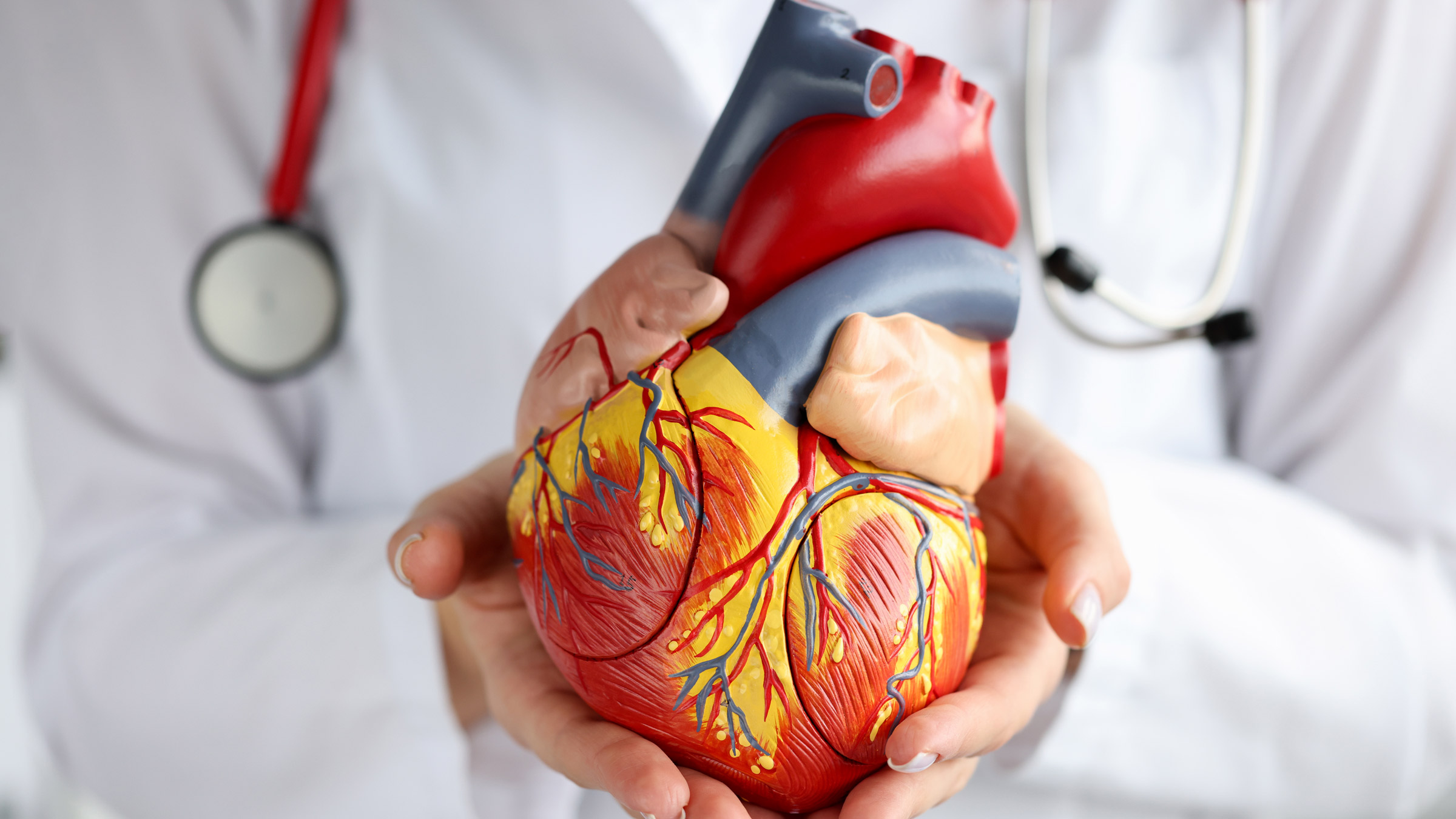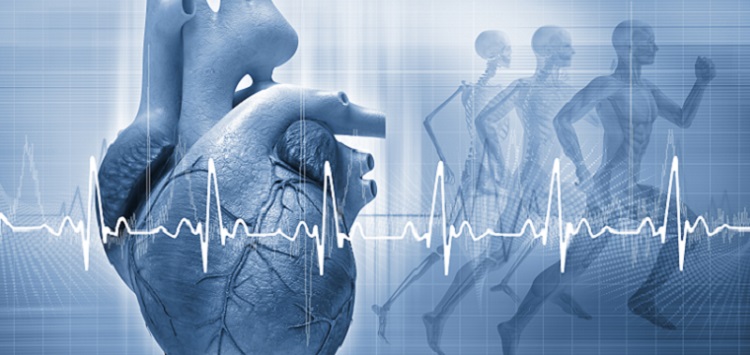Comprehending the Significance of Cardiology in Modern Health Care Providers
Cardiology plays an important function in modern-day health care, particularly as heart disease proceeds to be the leading root cause of death worldwide. Developments in diagnostics and treatment have actually changed client treatment, allowing earlier treatments and boosted end results. The change in the direction of preventative cardiology equips people to manage their health and wellness proactively. As innovation proceeds to progress, the combination of innovative services may better redefine cardiology's influence on public health, triggering a closer evaluation of emerging trends and their implications.
The Frequency of Heart Condition and Its Influence On Public Wellness
Although heart disease continues to be the leading reason of death around the world, its influence expands much past specific people to influence public wellness systems and economic climates. The high prevalence of cardiovascular disease puts a significant strain on medical care resources, requiring enhanced funding for treatment, prevention, and rehabilitation programs. Public health and wellness efforts need to attend to danger elements such as weight problems, smoking cigarettes, and inactive way of lives, which add considerably to the increasing incidence of heart conditions.Moreover, the financial concern connected with heart illness is immense, incorporating not just direct clinical costs but additionally indirect costs connected to shed performance and early mortality. Areas face challenges in managing these prices, typically leading to differences in health care access and end results. As the population ages and lifestyle-related threats remain to intensify, the necessity for efficient cardiology interventions ends up being paramount. Subsequently, dealing with heart disease is not just an issue of private wellness however additionally an essential public health and wellness top priority.
Advancements in Heart Diagnostics and Imaging Techniques
Current advancements in cardiac diagnostics and imaging strategies have actually transformed the area of cardiology, boosting the ability to find and check cardiovascular disease. Methods such as heart MRI, CT angiography, and echocardiography have actually become increasingly advanced, supplying thorough pictures of cardiac structures and features. These techniques enable the early recognition of problems like coronary artery disease, cardiac arrest, and valvular disorders.Moreover, innovations in non-invasive diagnostics, such as wearable technology and remote tracking devices, have actually equipped patients and healthcare providers. These devices facilitate real-time tracking of heart rhythms and other crucial signs, resulting in prompt interventions. Additionally, fabricated intelligence is being integrated into imaging analysis, enhancing precision and efficiency in medical diagnosis.
Advancements in Treatment Alternatives for Heart Conditions
Current innovations in cardiology have resulted in significant developments in treatment alternatives for heart disease. These consist of advanced medical methods that boost procedural outcomes and arising medicines that supply brand-new avenues for treatment. As the field evolves, these developments play a crucial function in boosting individual treatment and results.
Advanced Surgical Techniques
Technologies in medical strategies have changed the landscape of cardiology, using new expect clients with heart disease. Minimally invasive treatments, such as catheter-based treatments, have significantly decreased recovery times and medical facility remains. Techniques like robotic-assisted surgical treatment improve accuracy, permitting specialists to browse complicated anatomical frameworks with greater precision. Innovations in imaging modern technology promote real-time visualization throughout procedures, enhancing results. Transcatheter aortic shutoff substitute (TAVR) exemplifies a breakthrough in treating aortic stenosis, enabling shutoff substitute without open-heart surgical treatment. Additionally, hybrid strategies that combine catheter-based and medical methods provide customized services for various heart concerns. These innovative surgical methods not only enhance client safety and security yet likewise increase therapy options, emphasizing the vital role of innovation in modern cardiology practices.
Arising Therapies and drugs
As the landscape of cardiology remains to advance, arising treatments and medications play a critical function in improving treatment options for heart disease. Developments such as novel anticoagulants and progressed lipid-lowering representatives have changed the administration of heart diseases, greatly reducing person morbidity and mortality. Furthermore, the advancement of gene treatments and regenerative medicine supplies encouraging opportunities for treating problems formerly regarded irreversible. Clinical tests are continuously exposing the efficacy of these therapies, pressing the boundaries of standard treatments. Furthermore, the combination of digital wellness technologies helps with personalized medicine, permitting customized treatment plans based on hereditary and lifestyle aspects. Collectively, these improvements underscore the vibrant nature of cardiology, improving individual outcomes and redefining criteria of care in modern-day healthcare.
The Function of Preventive Cardiology in Patient Treatment
Precautionary cardiology plays a necessary function in individual care by concentrating on the recognition of danger elements that add to cardiovascular disease. Through way of living adjustment techniques and early discovery methods, healthcare service providers can successfully reduce the occurrence of cardiovascular occasions - Cardiology Jupiter. This aggressive strategy not just boosts client results but likewise advertises lasting health and wellness
Threat Factor Recognition
While cardio illness remain a leading source of morbidity and mortality worldwide, efficient risk factor recognition serves as a keystone of precautionary cardiology. Determining danger factors such as hypertension, diabetic issues, household, and hyperlipidemia background is important for early treatment. Medical care professionals utilize different evaluating techniques look these up to assess these aspects, enabling tailored precautionary actions. Furthermore, comprehending a person's way of life choices, such as smoking cigarettes and physical inactivity, further educates risk analyses. This comprehensive evaluation enables medical professionals to create tailored treatment plans focused on mitigating dangers. By focusing on threat factor recognition, health care systems can enhance individual end results and lower the overall burden of heart diseases, inevitably adding to boosted public health and wellness methods and resource allotment.
Way Of Life Alteration Approaches
A plethora of researches highlights the essential function of way of life alteration techniques in minimizing heart disease threat. These methods incorporate dietary modifications, enhanced physical activity, cigarette smoking cessation, and weight administration. By embracing a heart-healthy diet plan rich in fruits, vegetables, whole grains, and lean healthy proteins, individuals can lower cholesterol degrees and high blood pressure. Normal physical task strengthens the heart and improves overall cardiovascular health. In addition, stopping smoking cigarettes significantly lowers the danger of cardiovascular disease and boosts recovery rates for those with existing problems. Weight administration further adds to cardio health by reducing various other danger aspects such as diabetes mellitus and hypertension. Implementing these way of living transforms not just promotes specific wellness yet also acts as a foundation of precautionary cardiology in patient care.
Very Early Detection Techniques
Lifestyle modifications significantly add to reducing heart disease dangers, but they are most reliable when coupled with very early discovery methods. Preventative cardiology emphasizes the relevance of identifying possible heart issues before they rise into serious problems. Techniques such as blood pressure surveillance, cholesterol screening, and progressed imaging technologies like echocardiograms play crucial duties in assessing cardio health. Biomarkers and hereditary testing additionally enhance the accuracy of early discovery, enabling customized precautionary techniques. Regular cardiac danger analyses encourage doctor to step in proactively, possibly avoiding cardiovascular disease and strokes (Cardiologist near me). By integrating these early discovery techniques into routine treatment, patients can take advantage of prompt way of life treatments and targeted treatments, ultimately boosting end results and boosting lifestyle
Integrating Innovation Into Cardiology Practices
As improvements in technology remain to improve different fields, the combination of innovative devices and systems right into cardiology practices has become essential for boosting person treatment and results. Telemedicine platforms allow cardiologists to check patients remotely, enhancing access to care while decreasing the problem on health care facilities. Wearable tools, such as smartwatches, allow continuous heart price monitoring, alerting both medical professionals and individuals to prospective concerns in real-time. Furthermore, expert system (AI) is being made use of to examine huge amounts of cardiac information, assisting in early medical diagnosis and customized therapy plans. Advanced imaging strategies, including 3D echocardiography, enhance visualization of heart structures, causing a lot more exact interventions. Electronic health and wellness records (EHRs) simplify patient info administration, guaranteeing that cardiologists have instant access to vital information. Together, these technological innovations are changing cardiology, advertising positive monitoring and enhanced health end results for clients with cardio conditions.
The Significance of Person Education and Interaction
Individual education and engagement play an essential role in the administration of cardiovascular health and wellness. By gearing up people with important link understanding concerning their conditions, treatment choices, and way of living adjustments, doctor equip people to take an energetic role in their care. This aggressive method can cause read what he said improved adherence to recommended drugs, nutritional adjustments, and workout regimens, ultimately decreasing the risk of complications.Engagement additionally promotes a strong patient-provider partnership, urging open communication and trust. When people really feel informed and entailed, they are most likely to voice problems and ask inquiries, which can cause better clinical end results. Furthermore, academic sources, such as workshops or digital systems, can improve understanding and promote self-management approaches. On the whole, focusing on patient education and learning and engagement is vital for improving cardiovascular wellness, enhancing lifestyle, and reducing healthcare costs connected with cardio conditions.
Future Trends in Cardiology and Their Potential Impact

Frequently Asked Questions
What Way Of Living Modifications Can Minimize Heart Illness Risk?
The existing concern addresses way of life changes that can greatly lower heart problem danger. Cardiology care. Adopting a well balanced diet plan, taking part in normal physical task, maintaining a healthy and balanced weight, handling anxiety, and avoiding cigarette can significantly improve cardio wellness
Just How Can I Recognize Very Early Indications of Heart Problems?
Recognizing very early indications of heart issues involves monitoring symptoms such as chest discomfort, lack of breath, tiredness, and irregular heartbeat. Timely awareness of these signs can trigger required clinical assessment and treatment for far better results.
What Are the Distinctions In Between Cardiologists and Heart Surgeons?
The differences between cardiologists and cardiac surgeons hinge on their functions; cardiologists mainly identify and handle heart disease with non-invasive approaches, while heart cosmetic surgeons perform procedures to correct architectural heart issues. Each plays an essential, unique duty.

Just how Commonly Should I Get My Heart Health Checked?
The regularity of heart checkup varies based on private threat elements. Usually, adults ought to go through analyses every one to 2 years, while those with status quo might need even more frequent evaluations as suggested by medical care professionals.
What Function Does Genetics Play in Heart Condition Risk?
Genetics considerably affects cardiovascular disease risk, with domestic patterns indicating inherited conditions. Certain genetics can predispose people to high blood pressure, cholesterol problems, and various other cardio troubles, highlighting the importance of hereditary testing in reviewing heart health. Heart illness continues to be the leading cause of death internationally, its influence expands much beyond private clients to impact public wellness systems and economic climates. Public health and wellness campaigns must attend to risk factors such as excessive weight, smoking, and sedentary lifestyles, which add considerably to the increasing incidence of heart conditions.Moreover, the financial worry connected with heart disease is immense, incorporating not just direct medical costs yet likewise indirect expenses connected to shed performance and early mortality. Precautionary cardiology plays a crucial duty in person care by concentrating on the recognition of risk factors that add to heart condition. Man-made intelligence (AI) and equipment discovering are improving diagnostics and client monitoring, enabling very early detection of heart conditions. The distinctions between cardiologists and heart doctors lie in their roles; cardiologists mostly identify and manage heart conditions via non-invasive approaches, while heart cosmetic surgeons perform medical procedures to deal with structural heart problems.